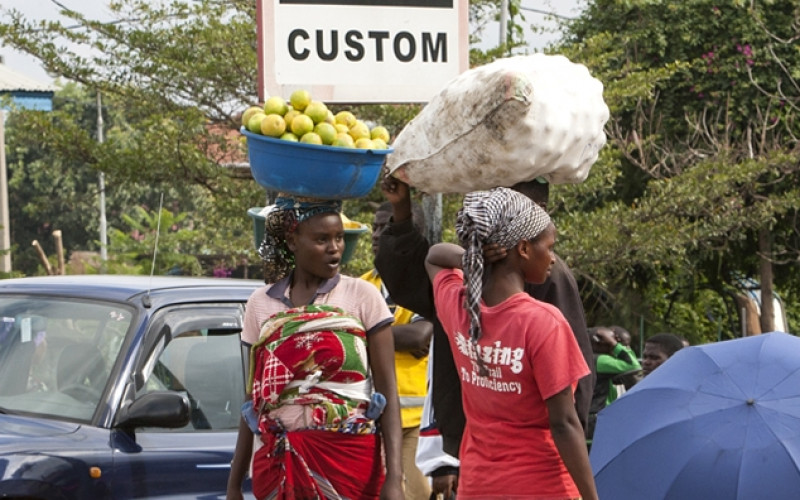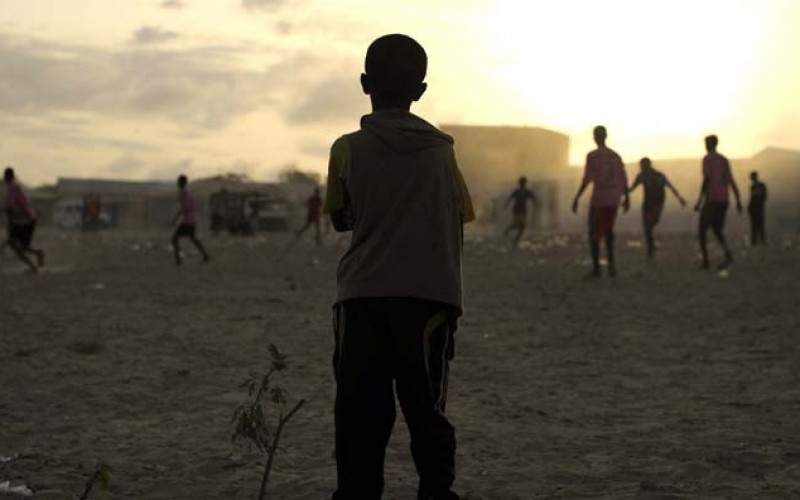IN A POTENTIALLY radical departure from past approaches to helping poor countries develop, the US has embarked on a bold experiment that ties aid eligibility to 16 indicators measuring a state’s performance in three categories: just rule, economic freedom and investment in people.
The Millennium Challenge Account, which will be administered by the newly established Millennium Challenge Corporation, will run independently of the State Department’s 44-year-old US Agency for International Development, will use dramatically different rules, and will bring major new resources to qualifying countries. While USAID budgets will remain flat, MCA funding is set to rise from $1 billion this year to $5 billion in 2006 – roughly doubling present US spending dedicated to development.
MCA plans to jump-start economic growth by concentrating resources on well-governed countries, who will make better use of it than nations only weakly committed to reform. To qualify, countries must pass three hurdles: Have low per capita income (the threshold is $1,435 in 2004, rising to $2,975 in 2006); rank above-average on the governance indicators and present spending plans that will boost growth and offer clear measurements of success. ‘The MCA has the potential to bring about the biggest transformation in US foreign assistance strategy in several decades,’ wrote Steve Radelet, an aid researcher at the Centre for Global Development and former deputy assistant secretary for Africa in the US Treasury, in the book Challenging Foreign Aid.
‘The programme’s design challenges conventional aid programmes in several ways and promises – if implemented carefully – better outcomes for both recipient countries and the American people.’
In May, the US announced that 16 countries had passed the indicator test, out of 74 (39 of them African), which met the low-income requirement. The countries qualified to apply for MCA funds include eight from Africa – Benin, Cape Verde, Ghana, Lesotho, Madagascar, Mali, Mozambique, and Senegal – and eight from the rest of the world: Armenia, Bolivia, Georgia, Honduras, Mongolia, Nicaragua, Sri Lanka, and Vanuatu. The MCC plans to increase the number of participating countries to 20 or 25 in three years.
Internet Rules
Traditionally foreign aid has been allocated by a confusing, often conflicting set of strategic, humanitarian and developmental priorities. Aid donors talked about good governance but relied more on stated intentions to reform than actual results. Consequently, donors frequently turned a blind eye to gross corruption, stolen elections and failure to deliver on development promises.
The MCA, on the other hand, is the first attempt to demand a track record of solid performance up front, based on unequivocal numerical rankings of governance. To ensure that countries are chosen on their merits rather than US strategic interests, the system relies on indicators produced by private research institutes and international agencies as follows:
- Ruling Justly: Based on Freedom House rankings of civil liberties and political rights as well as World Bank Institute indices on accountability, governance and control of corruption.
- Economic Freedom: Determined by credit ratings, inflation rates, business start-up times, trade policies and regulatory regimes as measured by such institutions as the World Bank, the International Monetary Fund and the Heritage Foundation Index of Economic Freedom.
- Investment in People: Gauged according to public expenditure on health and primary education, immunisation rates and primary school completion rates as recorded by the national governments, the World Health Organisation and the UN.
To be eligible for the MCA, countries must perform above the average of all country scores in at least half of the indicators in each category. A country will automatically fail if it performs substantially below average in any one indicator or ranks below the median on measures of corruption.
Once qualified, countries must submit three- to five-year spending plans with clear indicators for measuring progress and explanations of how spending projects will directly promote growth and alleviate poverty. Programmes that do not show results or those from countries that fail to perform on the prescribed indicators risk being dropped. All country rankings, spending plans and project results will be posted on the Internet. Staffed largely from the private sector, the agency is governed by a corporate-style board, led by the US Secretary of State, with membership from government, business and the non-profit sector.
Unmeasurable Progress
For Africa, the world’s most aid-dependent region, the MCA has important implications. It is part of a broader trend of aid reform, driven by growing donor frustration with the inability of aid to deliver measurable results. Japan recently conducted an extensive review of its foreign aid programmes. The UK also has conducted several internal reviews in recent years and recently formed an Africa Commission to search for better means of assisting with the continent’s development challenges. Denmark and the Netherlands have chosen to withdraw aid programmes from poorly performing countries in favour of supporting fewer recipients that show greater enthusiasm for reform. Canada has set up a separate fund for HIV/AIDS and floated plans to form a Canada Corps to rapidly deliver technical expertise to developing nations.
According to the World Bank, more than $1 trillion in aid and loans has been given to Africa since the 1960s, but most of the recipients have little to show for it. Infrastructure is crumbling, poverty is deepening and delivery of basic services is poor.
Externally imposed structural adjustment programmes are at least partly to blame. ‘What is clear is that the hopes for “adjustment with growth” did not work out. There was too little adjustment, too little growth and too little scrutiny of the results of adjustment lending,’ wrote William Easterly, a former World Bank economist in The Elusive Quest for Growth. Easterly and other critics suggest that aid may have worsened Africa’s governance by softening the blow of poor policies and thus insulating leaders from public wrath. Instead of cutting off the funds when governments misbehaved, the US, World Bank, International Monetary Fund and other donors accepted bland promises that performance would improve.
Practical Problems
By using indicators rather than vague guidelines, MCA’s architects intend to impose an unequivocal choice: Either recipients achieve tangible results or lose funding.
Translating that theory to reality will not be easy. The MCC presently has only 20 staff members and plans to add only another 60 to 70 by the end of the year. At full strength, the corporation will have just 150-200 people – a tenth of the USAID staff. Critics wonder how such a small team, with no in-country offices, will manage to assess and monitor large-scale aid projects.
‘If the MCA does not establish a stronger monitoring and evaluation system than in existing programmes, it is doomed to fail to achieve strong development results,’ according to Radelet.
The ongoing costs of the wars in Iraq and Afghanistan, coupled with rising budget deficits, mean that the plan to increase MCA funding to $5 billion will face stiff congressional scrutiny, particularly if George W. Bush loses the November presidential election. Even so, the programme has broad political support in both major political parties.
‘September 11 changed things on Capitol Hill,’ said Mary Locke, a senior staff member on the Senate Foreign Relations Committee, who helped draft the MCA legislation. ‘It quieted voices that said aid was international welfare. Post-9/11, Congress knows in its bones that if you don’t have a stable and prosperous world, you are not safe.’
Another thing working in the MCC’s favour is the relatively simple legislative framework governing it. Washington’s traditional aid agency, USAID, has become increasingly hamstrung by eccentric and competing demands from Congress over the years. The frequently amended US Foreign Assistance Act, which stipulates the terms of international aid, now specifies 33 goals, 75 priority areas and 247 directives. Instead of deciding on a clear budget, Congress frequently engages in ‘earmarking’, the practice of dedicating funds from the overall budget to specific, politically popular programmes, such as disaster relief. That often leaves USAID scrambling for crumbs to fund other goals, particularly growth-oriented projects.
Although political support for the MCA stems in part from concern over weak states and terrorism, it does not address the problem because it leaves the more problematic nations to USAID, other donor nations and international lending institutions like the World Bank. If the MCA approach fails, it may damage the already fragile political support for foreign aid among US budget-makers and the general public. But if it works, it will increase the pressure to reform USAID and accelerate global demands for greater accountability in recipient governments.
That may not be a bad thing. With increasingly tough conditions imposed by the IMF, World Bank and other donors, the MCA has the potential to signal that corrupt, autocratic regimes face a future of ever dwindling aid.







